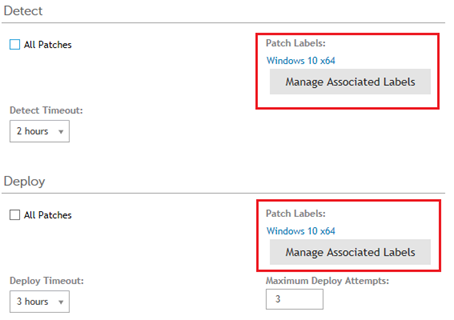Best practices for patching devices include testing patches, using labels to organize devices and patches, and notifying users when systems are being patched. This article provides recommendations to achieve best patching results and what are the requirements that need to be meet before testing and executing a patching activity using KACE SMA.
Recommendations when setting up and using KACE patching:
1. Check Ports and URL’s
Websites that must be accessible to the KACE SMA – Patch download requires ports and URL’s to be white-listed. For additional information and details review web resources listed below.
2. Set up and review Patch-subscription workflow / Download settings
Patch-subscription allows selection of desired patches (based on publishers) prior proceed setting up patch downloads and downloading patches. For additional details see patch subscriptions and patch download settings.
Other useful resources, refer to the following articles:
Configuring KACE SMA Patch Subscription options (4284511)
KACE SMA patch status showing as “downloading” (4288925) (This article provides information about Patch Download settings and how each of its options operate)
3. Patch Smart Labels - Using Smart Labels for patching
Note: Detect "All patches" will detect all available patches (Patches in available in catalog - Active Patches). This process can take a long time; detects all missing patches regardless of whether they are required by managed devices and Deploy "All Patches" deploy all patches depending on Detect Results.
How to create and use smart labels, see Using Smart Labels for patching .

4. Test patches before deploying them
This testing ensures that patches do not break anything before they are widely deployed. When choosing test devices, look for these characteristics:
For a thorough test, devices should function normally for at least a week after being patched. If no problems are reported after a week, the patch can be deployed to the remaining devices on the network.
5. Use labels to organize devices
Additional information about Device Smart Labels, see Adding Smart Labels for devices.
6. Configuring patch schedules
Details about patch schedule configuration, see Configuration patch schedule.
7. Replication shares: .
Use Replication Shares to optimize network resource requirements and download time. Replication Shares are devices that keep copies of files for distribution, which can be useful for managed devices that are deployed across multiple geographic locations.
For example, using a Replication Share, a device in New York could download patch files from another device at the same office, rather than downloading those files from a KACE SMA in Los Angeles.
For more information on setting up and using Replication Shares, see Using Replication Shares . Other useful resources - How to create a replication share to save bandwidth on KACE SMA file transfer tasks (4304748).
8. Troubleshooting patching issues and errors - review following articles below:
For aditional questions or having issues with patches and need further assistance feel free contact us - KACE Support.